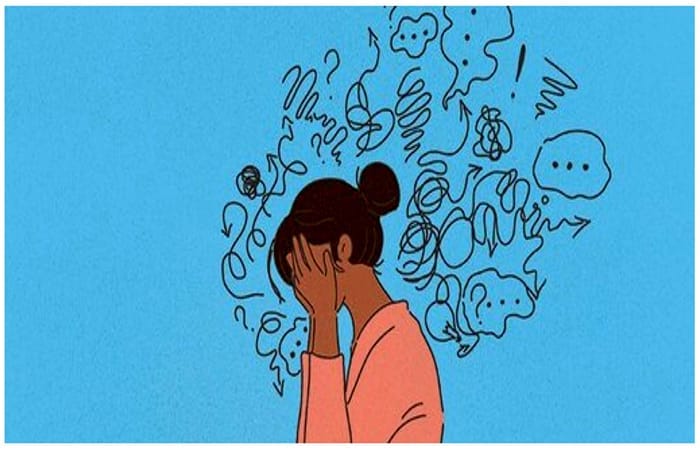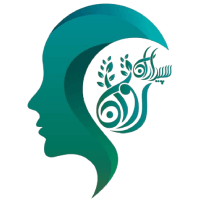
Blog
Seasonal Depressive Disorder

In 1984, American psychiatrist Norman Rosenthal first proposed the term “seasonal depression”. Since then, many people have used this term to describe their mental state during different seasons. Seasonal affective disorder (SAD) is a type of depression that begins with the change of seasons. Winter is reported to be the most common season for this disorder, as the shorter and colder days can leave many people feeling weak and lacking in energy. Coping with these seasonal and weather changes can be difficult for many people and disrupt their daily functioning. Therefore, it is crucial to be aware of this common disorder.
فهرست عناوین
ToggleDescription of seasonal depressive disorder
Seasonal affective disorder is a term for major depressive disorder (MDD) with a “seasonal recurrence” pattern. This disorder is a psychological problem that causes depression and usually occurs due to the change of seasons.
There are two main types: autumn and winter depression, which starts in autumn and disappears in spring, and spring and summer depression, which begins in spring and disappears in the fall. Winter depression is the most common type of SAD, while spring and summer depression is less reported.

Causes of seasonal depression
The exact cause of seasonal affective disorder is still unknown. The key factors in the occurrence of seasonal depression vary from person to person and include the following:
place of residence
People who live far from the equator, where winter nights are long and there is less daylight, are more likely to suffer from seasonal depression. For example, seasonal disorder is more common in northern Canada than in Florida.
received light
Research suggests that light plays a crucial role in seasonal depression. Reduced light can disrupt the body’s biological clock and hormone release, leading to disturbances in mood and sleep cycle, and ultimately causing depression symptoms.
Serotonin hormone
Serotonin, known as the “feel-good” hormone, is one of the neurotransmitters in the brain that influences our mood. Decreased sunlight can lead to reduced serotonin levels and results in depression.
Melatonin Hormone
Melatonin is a hormone that regulates the circadian sleep cycle and the human biological clock. Changes in seasons disrupt and confuse the body’s melatonin levels.
Vitamin D
Vitamin D is produced when the skin is exposed to sunlight. It enhances the function of serotonin, the “feel-good” hormone. Deficiency of this vitamin during cold seasons can lead to seasonal depression.
Genetics
Those who have a genetic background in mental disorders among their relatives are generally more likely to be exposed to the risk of seasonal depression.
Suffering from other disorders
If a person is suffering from major (severe) depression or bipolar disorder, the possibility of seasonal depression symptoms increases. Also, seasonal depression is more common in women than men, and it is more common in young people than in elders.
What are the symptoms of seasonal affective disorder?
Seasonal depressive disorder affects people in different ways, and its symptoms disappear after the end of the season.
In general, these symptoms include the following:
- Feeling sad or low almost every day and throughout the day.
- Diminished interest in activities that a person used to enjoy.
- Feeling of lethargy, numbness, and decreased energy
- Too much or too little sleep
- Overeating or loss of appetite (depending on the season)
- Impaired concentration and memory
- Feelings of hopelessness, worthlessness, or guilt
- Sometimes having suicidal thoughts
Notice that a person must have at least two initial symptoms and five of the following symptoms.

Treatment of seasonal depression
To manage seasonal depression, you can use different methods or perform them simultaneously and combine these methods.
Light therapy
The light box simulates the sun and provides the light your body needs. Often, the light of this box is brighter than the light of ordinary lamps and has a range of wavelengths. People who have seasonal depression disorder can use the box for a few minutes during the day until their body’s natural cycle is adjusted and the hormone melatonin is released on time and in the right amount.
Aromatherapy or aromatherapy
Aromatherapy may be effective in people with seasonal depression. Essential oils and scents can affect the points in the brain that control mood and the body clock. For example, in research, scientists proved that the aroma of the fir tree affected sleep and appetite and reduced the symptoms of depression.
Sports
Exercise is very effective in controlling and improving depression. Regular exercise, preferably outdoors for exposure to sunlight, is very effective in managing and improving depression symptoms, particularly seasonal depression.
Diet
Be mindful of your diet. People with seasonal affective disorder often crave sweets and starchy foods, which can briefly boost energy but ultimately lead to weight gain and increased blood sugar levels. Instead, focus on consuming foods rich in protein, vegetables, unprocessed foods, and complex carbohydrates.
Stress management
Meditation is one of the most effective ways to reduce stress. Yoga can also help manage stress and maintain physical fitness during the months of depression.
One of the most effective ways to reduce stress is meditation. Yoga can also help you lessen stress and keep you slim during the months of depression.
Psychotherapy
A good therapist will help you get through the winter with therapeutic techniques or by prescribing anti-depressants to minimize the possibility of depression in the following winter.
Finally, remember that it is crucial to be mindful, gather the necessary information, and ask for help.
برای مشاوره رایگان و رزرو وقت (یا اگر تماس گرفتید و قادر به پاسخگویی نبودیم) شماره تماس خود را وارد کنید. ما به زودی با شما تماس می گیریم!



